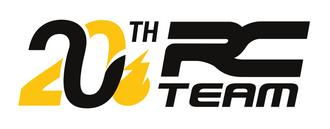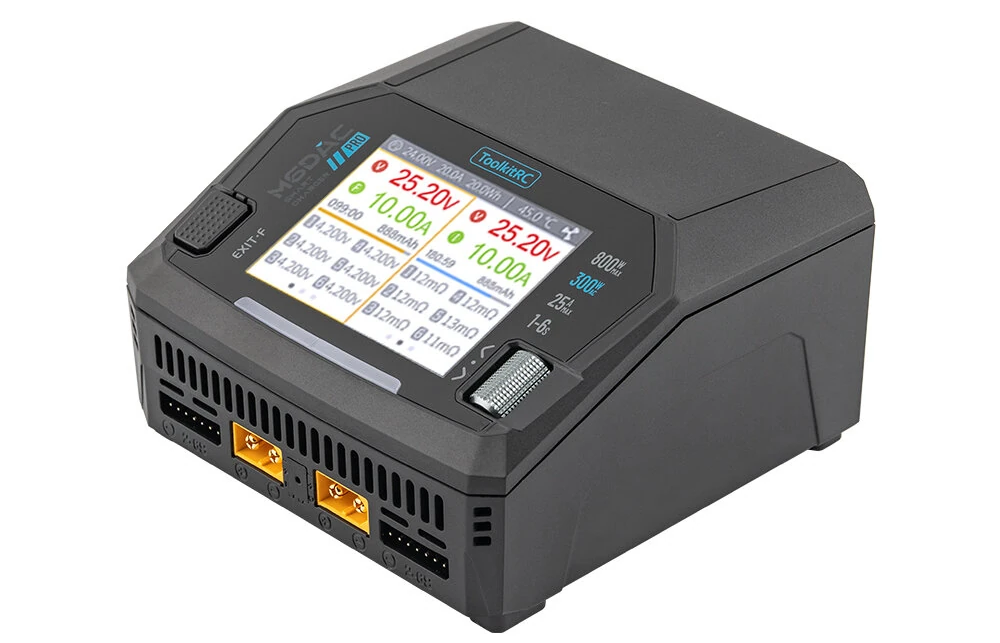Among the many types of RC cars available, the Mini-Z series from Kyosho is one of the best. It is collected by many fans and prized by beginners and more experienced modelers alike because it is inexpensive, high-performing, and easily customizable. Another significant advantage is the number of different looks available. If you too would like to purchase this Kyosho micro car, we recommend reading this beginner's guide to Mini-Z.
Introduction to Mini-Z from {{439ddbb80788219e101e2289c3f88d7a}
}
What is a Mini-Z?
Kyosho is one of the oldest model manufacturers, and the Mini-Z is one of their most recent and popular creations. They introduced the Mini-Z in 1999 as "the first palm-sized RC car." The wheelbase of these miniature machines varies between 86 mm and 106 mm, which is about the length of a hand from pinky to thumb, explaining why the term "Mini" is in its name. The "Z" part comes from the fact that it is an easy-to-handle car that can be completely customized and rebuilt from "A" to "Z."
In the two decades since its release, the Mini-Z range from Kyosho has become a must-have model among RC car enthusiasts. The vehicles are all of excellent quality in terms of both performance and appearance. They give model enthusiasts the feeling of owning a high-performance vehicle at a low price.
What is the history of the Mini-Z?
The first chassis that Kyosho created in 1999 for the Mini-Z range was called the MR-01. It was available in three models based on real vehicles: the Nissan Skyline GTR, the Mitsubishi Lancer Evo VI and the Subaru WRX.
The second generation of their flagship model, the MR-02, was released in 2004 and underwent major design changes. Notably, the AAA batteries, which used to be installed upright, are now laid flat in the chassis. The Ferrari Enzo was the first model based on this MR-02 chassis.
All of these chassis were equipped with two-wheel drive ( 2WD). The company's next major breakthrough was the development of an all-wheel drive ( AWD) Mini-Z, which makes drift easier to practice. Instead of MR, the name of these AWD vehicles begins with MA. The first was the MA-010, which is the AWD version of the MR-01.
More recently, in 2009, the latest generation of MR chassis was released with the MR-03. This model features several major improvements and is also available in an AWD version with the all-new MA-020.
Why choose an Mini-Z?

For aesthetics and variety of models
Despite the amazing performance and capabilities of Mini-Z cars from Kyosho, not all enthusiasts use them for racing. Some attach great importance tothe appearance of the vehicles. For these modelers who are very sensitive to aesthetics, one of the major attractions of the Mini-Z is the number, beauty, and precision of the decorative bodies and accessories available. In fact, they are so well made that many modelers collect only the bodies. The manufacturer offers 1/27 scale models inspired by real vehicles (mostly Japanese cars such as Toyota, Subaru, and Nissan, as well as other brands such as Lamborghini et Ferrari).
To customize your car
If you like the Mini-Z as it is, then go ahead and enjoy it. However, you should know that these RC cars can be extensively customized. Many enthusiasts enjoy making a few simple modifications, while others change numerous parts in order to exploit the full potential of these machines. You will find many parts and accessories in our online store to customize your Mini-Z car, as well as bodywork to change its appearance.
For racing
Some modelers enjoy competing, and even though Mini-Z cars are not specifically designed for this purpose, they are worthy challengers, especially in indoor racing. Their top speed is generally 15 km/h but can reach up to 50 km/h with a modified{ {c815434bfb3aa174ffe9cd45c56dfcbc}}.
Achieving maximum top speed is appealing but not enough, and enthusiasts should above all choose maneuverable cars that can easily navigate the tight corners found on small Mini-Z race tracks. The ability to take corners without losing speed is essential to winning an RC race.
The different models of Mini-Z

The Mini-Z range now includes many different models, each with its own specific features and design. These include the Mini-Z equipped with a brushed motor and the Mini-Z VE model equipped with a more powerful and faster brushless engine (the latter is more competition-oriented). It is also available in a RTR version ("Ready to Run") or Readyset for beginners and in kit form for more experienced modelers.
Here is a comprehensive list of the different models and their uses:
- The MiniZ RWD is a micro car RTR (delivered complete and assembled) with rear-wheel drive (RWD).
- The MiniZ FWD is a RTR micro car (delivered complete and assembled) with front-wheel drive (FWD).
- The MiniZ AWD is a micro car RTR (delivered complete and assembled) with 4x4 (AWD = All-Wheel Drive) propulsion.
- The MiniZ Buggy is a micro off-road car RTR (delivered complete and assembled) of the 4x4 (four-wheel drive).
- The MiniZ MR03 Evo is a competition-oriented micro car with a brushless engine and rear-wheel drive (delivered without radio).
- The MiniZ MA-030 Evo is a competition-oriented micro car with a brushless engine and 4-wheel drive (delivered without radio).
You can choose your model here.
Customize your Mini-Z
!
The Mini-Z is a high-performance car suitable for leisure use, but it also has the potential to become a real racing beast by installing various optional parts. For fans of drift, style goes hand in hand with performance, so you can also enhance the presence of your Mini-Z with stylish parts.
The 3 recommendations from Kyosho for the Mini-Z
- Change the tires: The tires are the point of contact between the chassis and the On-road. As with all other cars, this is an extremely important element for performance. You can find all the tires for Mini-Z here and a guide on how to choose them here.
- Change the shock absorber springs: To gain performance, you can replace the rear springs with a friction rear axle. You can also modify the steering by replacing the front springs. Most drivers are used to having a car that understeers slightly. Soft springs allow the car to turn more.
- Change the T: This T-shaped part determines the roll of the chassis. Select a fiber T for more flexibility or a carbon T for more stiffness.
The 3 recommendations from Kyosho for the Mini-Z drift
- Change the spindles: The camber angle is the angle formed by the tires with the surface of the On-road. This is the most important aspect for cars drift. The Mini-Z AWD Sports is equipped with front and rear rockers.
- Install an LED kit: You will probably need to drill holes in some bodywork, but the operation is generally simple. When the front and rear lights are linked to the accelerator, the effect is simply exceptional!
- Install a gyroscope: A car that drift is difficult to control. The gyroscope stabilizes counter-steering by detecting chassis movements and automatically correcting the trajectory.
Some other interesting improvements
- Change the bearings: The basic bearings are often made of plastic, but they have a direct impact on the car's performance.
- Change the wheel nuts: The basic nuts are often made of plastic and wear out quickly.
- Install a timing chip: The timing chip will allow you to record your lap times.
Learn how to drive your Mini-Z!
The Kyosho training method
The Mini-Z is ideal for driving at home. An indoor training course can easily be set up using water bottles as cones or gates. All you need to do is time your performance. Before you do that, here is the training method suggested by Kyosho.
Training around two bottles

Place two plastic bottles about 2 meters apart. Try to go around them on the outside. This will help you develop your ability to steer close to objects. At first, go slowly, making sure to follow the same trajectory around the bottles. The better you get, the faster you can go!
Training on a figure-eight course

Once you have mastered driving in an oval, try driving in a figure eight around the plastic bottles. If you can do this easily, you have mastered the basics. Then create your own training course.
The Kyosho training method for the drift
You don't need a lot of space to practice drift in any season in your garage; all you need is a free area of about 3 x 2 meters. Most AWD { {e462dd4217535b9178ec56a2dabc963a}}s are already equipped with special drift tires so you can develop your skills right out of the box.
Practice driving around a cone

Place an object (such as a water bottle) in the center of the space you have allocated for the drift. Start drifting by turning the wheel all the way to the right or left, then press the accelerator pedal all the way down. Gradually bring the steering wheel back to neutral or counter-steer if necessary. The car will start to drift. Try to drive as smoothly as possible around the object you are using as a marker. The better you get, the tighter you can make the circle.
Practice drifting on a figure-eight course

Place two plastic bottles about 1.5 meters apart. Try to drive in a figure 8 pattern, making a drift around each bottle.
Learn to drift by countersteering

Outside steering = Steering to the outside / Inside steering = Steering to the outside
As you approach the turn at a constant speed, quickly turn the steering wheel to the left, then counter-steer to the right to make the Mini-Z drift. You will need to counter-steer at some point to exit the turn in a straight line.
Learn to drift with the throttle

Throttle off = Decelerate / Throttle on = Accelerate
Approach the turn at a constant speed, briefly release the throttle, then accelerate while turning inwards to make the Mini-Z drift. Once you are drifting, you will sometimes need to adjust the throttle and/or steering angle to maintain your trajectory.




